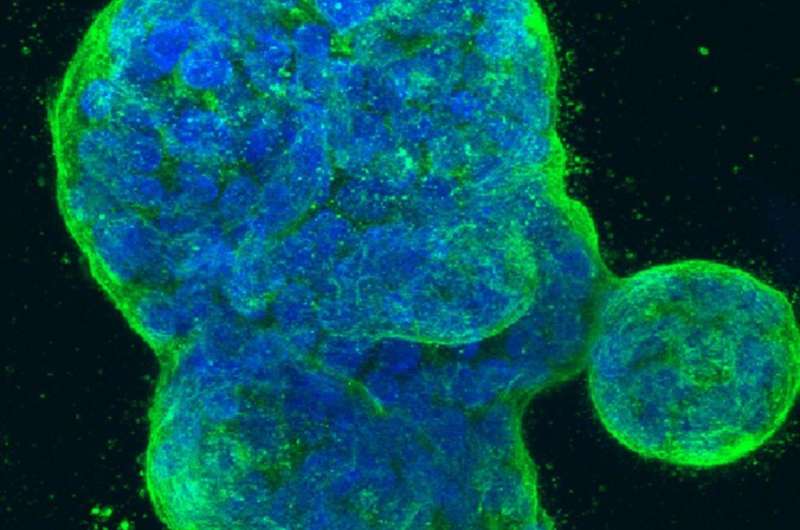Breast cancer's spread routes mapped

Breast cancer spreads to other organs in the body according to certain specific patterns. This has been shown by a team of researchers from Karolinska Institutet and KTH in Sweden and the University of Helsinki in Finland who have mapped breast cancer's spread routes in patients by studying the cancer cells' DNA. The study is published in the Journal of Clinical Investigation.
Breast cancer is the most common form of cancer in women. In Sweden, almost two thousand patients die of the disease every year. The fatalities are almost exclusively a consequence of tumours in the breast spreading to other organs, such as the skeleton, the brain and the liver.
Metastases in the axillary lymph nodes in the armpits are an important risk factor for breast cancer to spread to other organs. What was not known before is if these metastases are responsible for spreading cancer further to other organs or what routes the cancer cells take.
In the new study, the researchers have looked at the DNA in cancer tissue from 20 patients with breast tumours and metastases in both their axillary lymph nodes and other organs. By means of a technique called next-generation sequencing they were able to map the relationship between the cancer cells in the breast and those in metastases in other organs. This enabled them to show the cancer's spread routes.
The study showed that tumour cells are spread from the breast tumour to the axillary lymph nodes and to other organs such as the skeleton and the brain. Metastases then often spread from the first organ to other organs in the next stage.
"Our most important finding, however, was that the metastases in the axillary lymph nodes do not seem to spread further to other organs, so even if these metastases can show how aggressive the cancer is, it is not they that cause the spread," says Johan Hartman, Associate Professor at Karolinska Institutet's Department of Oncology-Pathology and one of the researchers who led the study.
They also found that in certain cases it is a matter of an early explosion of cancer cells from the breast tumour that simultaneously gives rise to metastases in several different organs. The researchers were also able to show that different regions of the breast tumours caused metastases in specific organs in the body.
Together the team's findings can help doctors make clinical decisions on when, where and how many tissue samples should be taken to understand how serious the disease is and adapt the treatment in the best possible way.
"The findings also confirm earlier research that shows cancer treatments needs to be adapted to the individual. We hope this will lead to better treatment of metastatic cancer in the future," Johan Hartman says.
More information: Ikram Ullah et al. Evolutionary history of metastatic breast cancer reveals minimal seeding from axillary lymph nodes, Journal of Clinical Investigation (2018). DOI: 10.1172/JCI96149
















